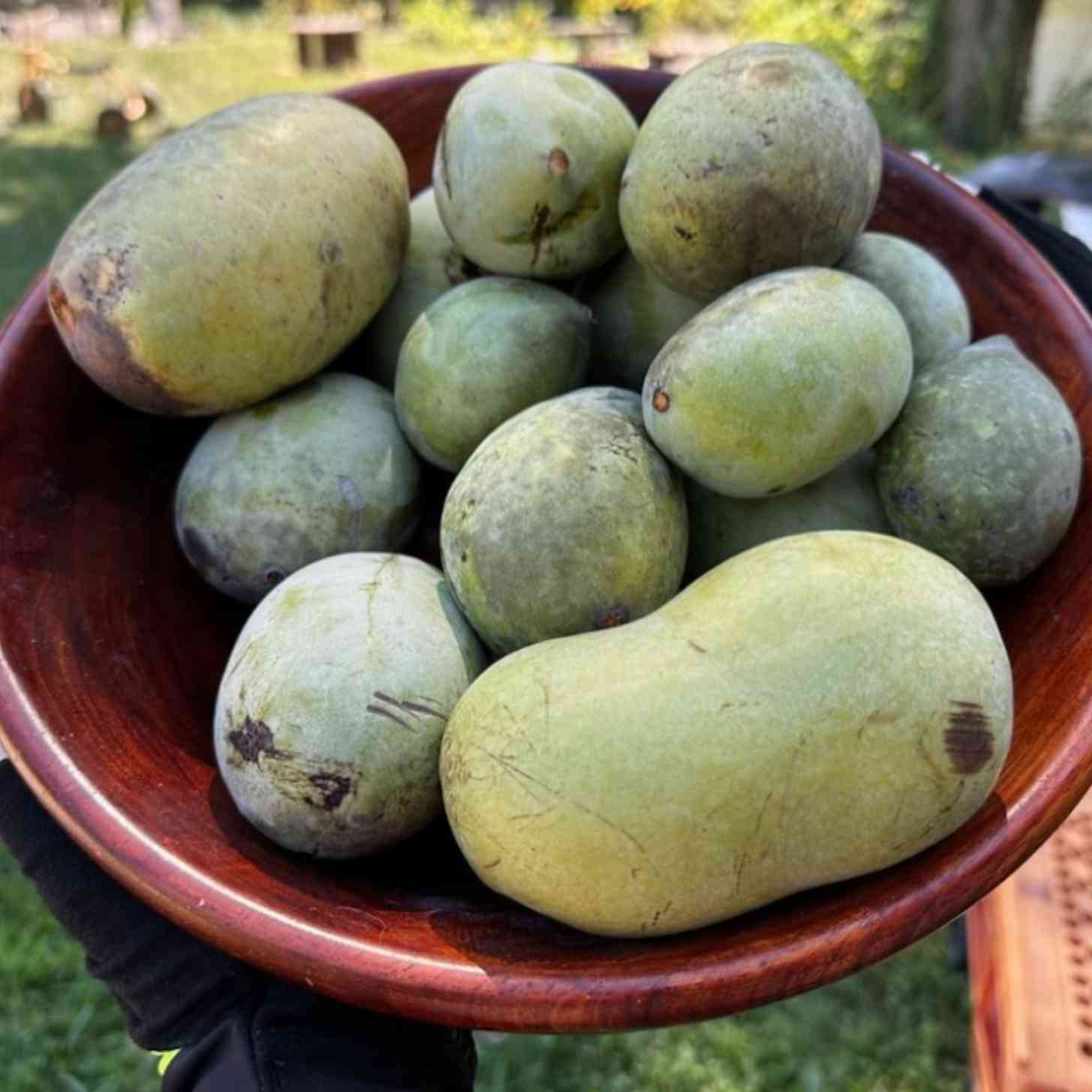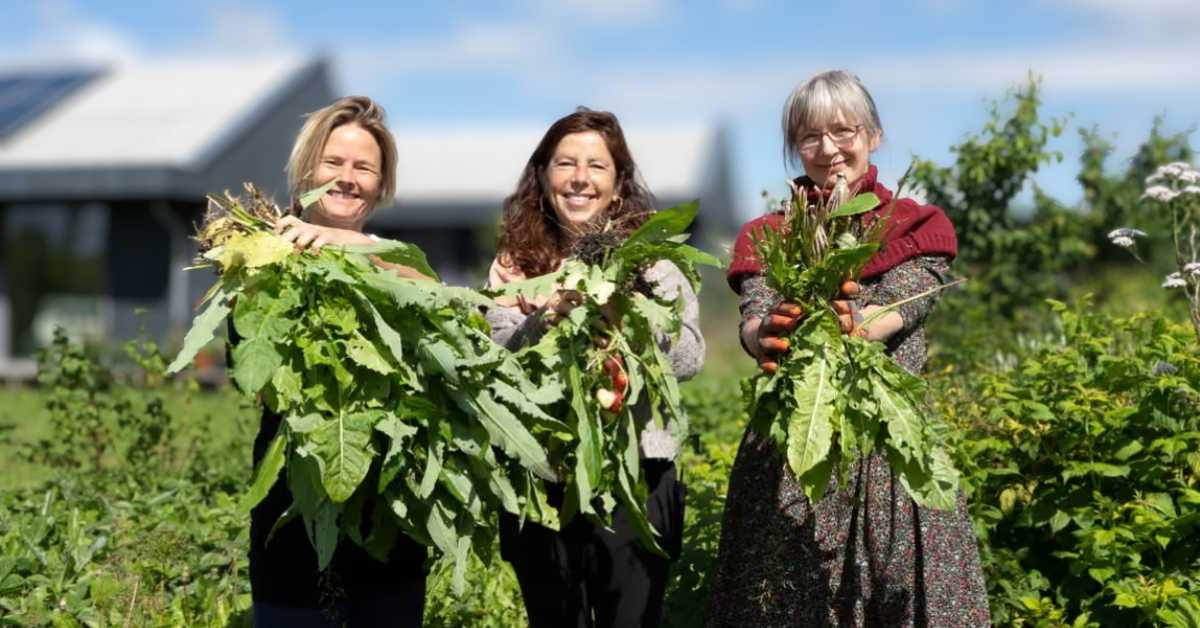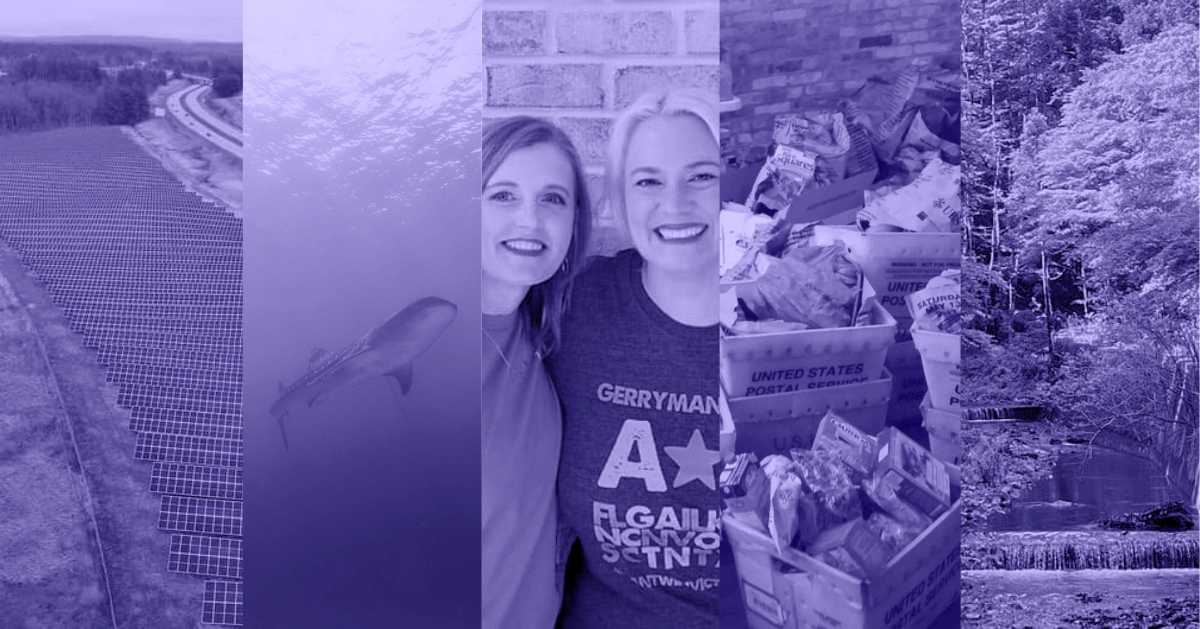From deforestation in the name of agriculture, to water pollution caused by pesticides and waste, food systems have a direct impact on our environment — and worsening climate conditions in turn lead to mass crop death and drought, decimating those very food systems we depend on.
Fortunately, regenerative agriculture, sustainable farming practices, and eco-friendly approaches are changing the way we farm, fish, and feast. From grain that’s been cultivated since 5000 BC to newly engineered “climate blend” bread, these five foods may have different histories, but they all have a part to play in future food menus.
Pawpaw
America’s largest native fruit is the pawpaw: a sweet, tangy treat with creamy, yellowish-green “meat” that can be scooped out with a spoon. In addition to being a low-impact crop that requires little intervention to grow, pawpaws are resilient against drought and flooding and naturally resistant to pests and diseases — no pesticides or fertilizers required.
Pawpaw trees also boost biodiversity by providing habitat and food for various insects, birds, and other wildlife — including the native zebra swallowtail butterfly, which relies exclusively on pawpaw leaves and nectar.

Now that smaller farmers are turning to sustainable agriculture, pawpaw orchards are cropping up in greater numbers, enrichening soil and restoring watersheds as they grow.
“Many of us are kind of bitten with the pawpaw bug,” Kirk Pomper, research lead of Kentucky State University’s pawpaw research program, told AG Daily. “It just has a lot of potential.”
Crickets
Scientists estimate that there are several quintillion (or a million trillion) crickets on the planet. And as world hunger mounts and researchers look for protein alternatives, the hopping, chirping insect has become an increasingly popular topic of discussion.
Crickets are already a traditional food source in many countries, including China, Thailand, Japan, and Mexico, and have proven to be invaluable historically when food was scarce.
And to those unfamiliar with the “taste” of cricket, it is best surmised as an earthy, nutty, mushroomy flavor. But its nutritional benefits — protein, zinc, potassium, iron, and vitamin B12 — give it added validity as a food poised for global adoption.
“There are many communities that know how to prepare insects in ways that make them most tasty,” Ishka Bless, an Australian researcher, told SBS News. “We have to acknowledge it and learn from that traditional knowledge but also understand how they may be incorporated using modern food technology methods.”
Lionfish
When he’s not feeding the hungry through his nonprofit, World Central Kitchen, chef José Andrés has been passionately spreading a message: Eat lionfish.
The invasive species, affixed with venomous spines, decimates native fish species and threatens coral reefs throughout the Atlantic Ocean, Caribbean Sea, and Gulf of Mexico. Producing 30,000 to 40,000 eggs every few days, the lionfish population continues to rise at an unprecedented rate.

Since 2018, Andrés has been serving up fried lionfish at several of his restaurants. Following his lead, an increasing number of chefs added the striped fish to their menus.
“Having lionfish on the menu is a very big message,” Andrés told the Daily Meal, adding that the environmentally-conscious meal goes very well with tartar sauce.
Fonio
“I’ve recently become fascinated by an ancient family of grains called millets,” Bill Gates wrote on X, formerly known as Twitter, in April 2024. He went on to note that although the food was new to him, it’s been well-known for generations in West Africa.
In fact, it’s even older than the wheel.
Fonio, which is part of the millet family, is an ancient grain that has survived five thousand years for a reason. It’s a drought-tolerant crop that not only grows well in poor-quality soil, but rejuvenates the ground as it grows. As climate change threatens food security globally, the nutrient-dense grain could play a crucial role in creating more resilient food systems while also combating malnutrition.
Although it is not currently available on a commercial scale, a new processing facility in Senegal is helping local farmers improve its viability as a “superfood” of the future.
“Climate Blend” Bread
For several years, scientists at the Washington State University Breadlab have been hard at work planting, harvesting, and baking a new “climate blend” bread to combat the challenges posed by climate change and excessive drought.
By combining ancient, drought-resistant grains like wheat and sorghum, and using regenerative farming practices, BreadLab aims to create a more resilient and equitable food system. And the sustainable bread not only supports climate-friendly agriculture — it makes great sourdough.
“I mean this in the best possible way,” Breadlab manager Janine Sanguine told NPR, “but it tastes like it’s made with white flour.”
You may also like: In this small town in Amsterdam, every resident devotes 50% of the land to growing food
Header image via Washington State University Breadlab



